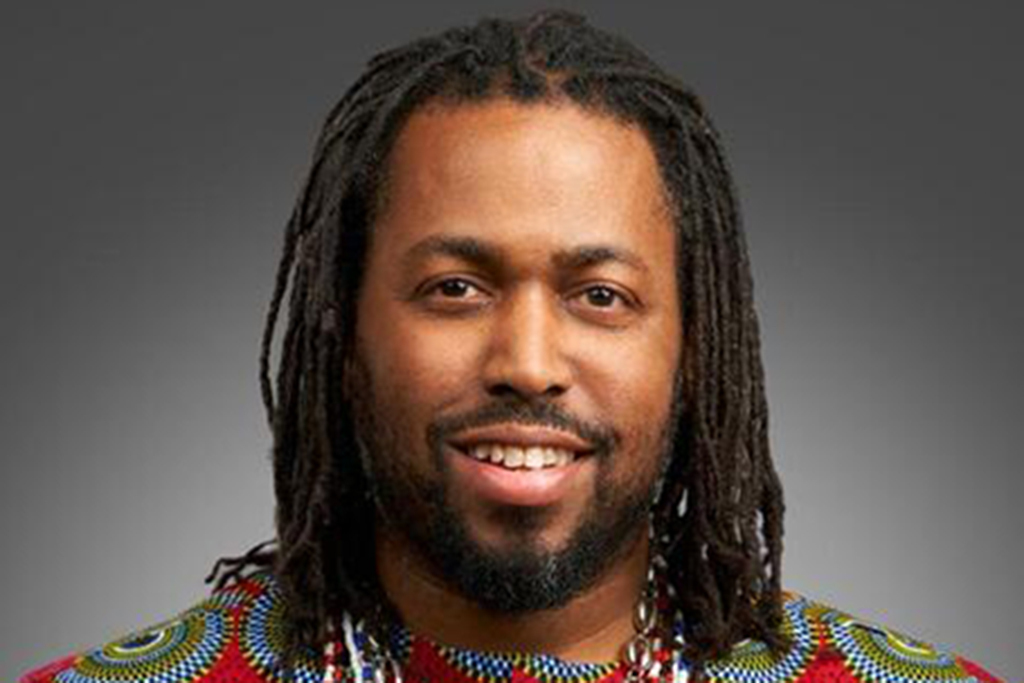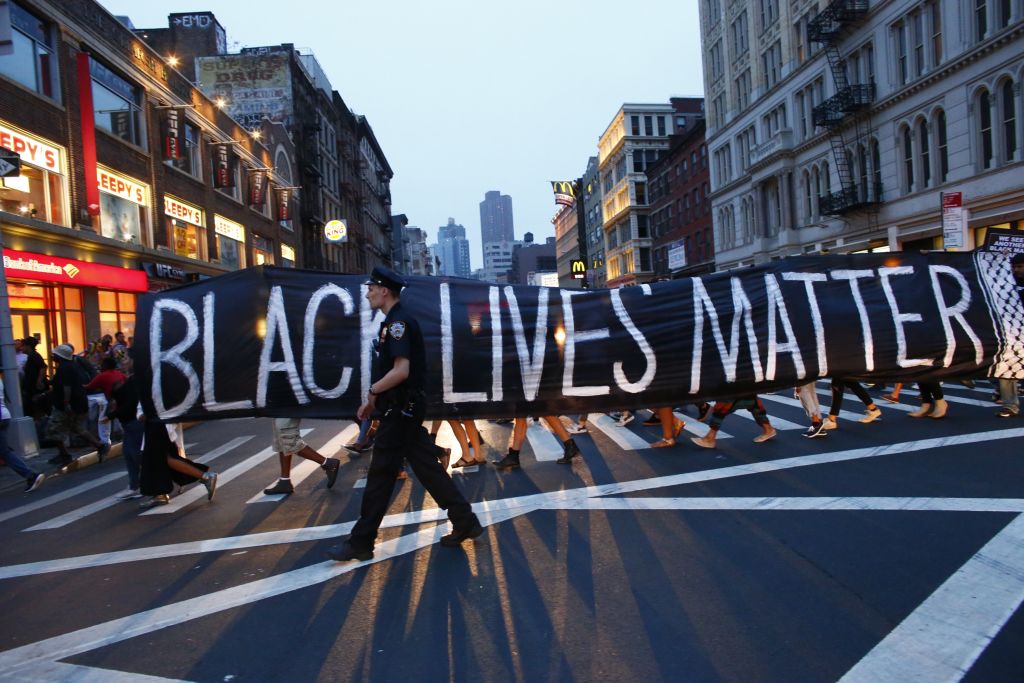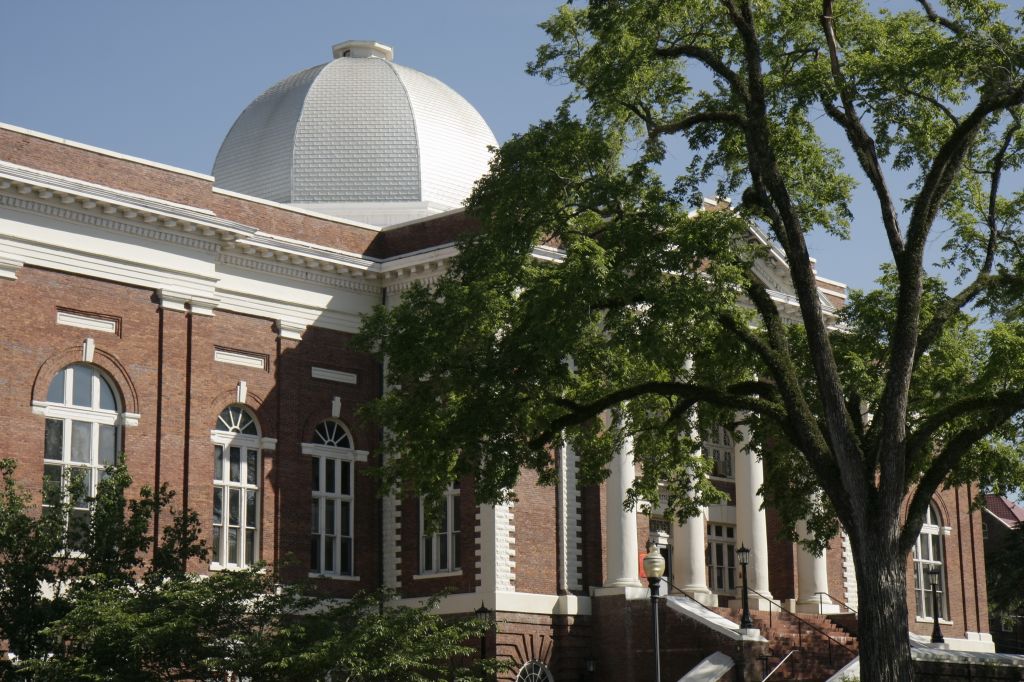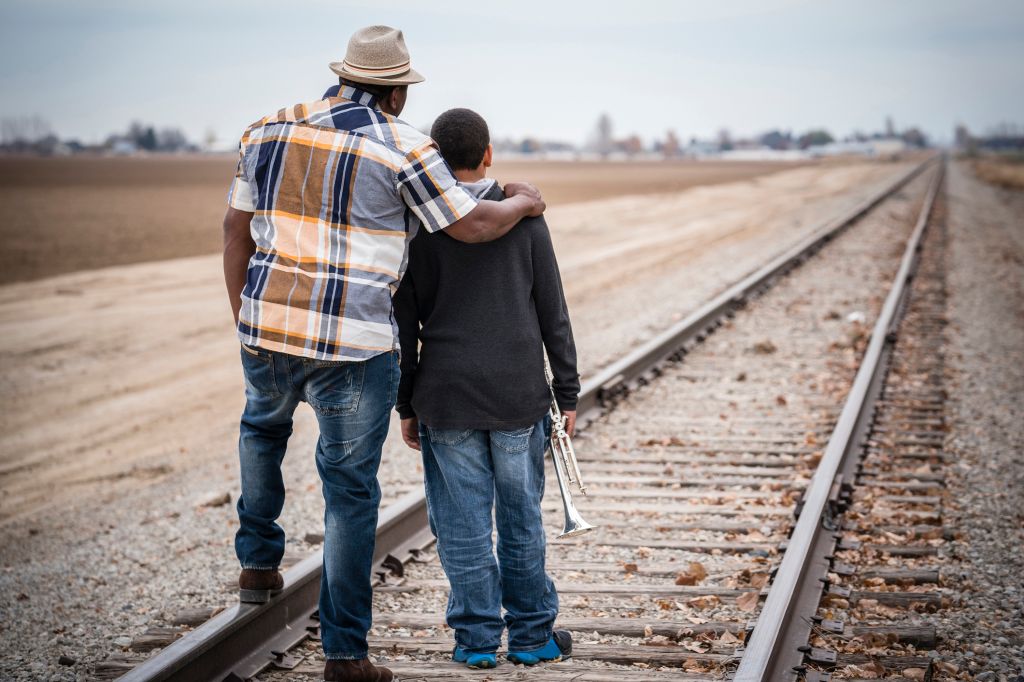Supply: iOne Digital Artistic Companies
The next is the most recent set up in NewsOne’s Special Series, An American Crisis: Black Child Suicide.
In the event you’re experiencing misery or want somebody to speak to, you’ll be able to dial 988 at any time for quick help. Educated counselors can be found to offer confidential help and help. You aren’t alone.
By some accounts, KM’s (initials used to guard privateness) suicidal ideation started throughout his junior 12 months in highschool with the loss of life of his grandmother after which eight months later, his mom’s. His story offers real-world definition to all these horrible statistics, numbers with out names, with out faces, with out narratives, which have been included within the current information in regards to the rise in Black child suicide and here, specifically, the rise in Black boy’s suicidal ideation, suicide attempts and completed deaths by suicide. In 2021, JAMA reported that between 2013 and 2019, Black boys and younger males dying by suicide had risen by a surprising 47%. At this writing, these numbers haven’t downturned. Certainly, predictions are worse as a result of these numbers don’t embody the psychological well being challenges that impacted–and proceed to influence—Black youngsters within the wake of the pandemic of 2020 and 2021.
In KM’s case, as is true for a lot of of our kids, the one means his ache could possibly be understood was by both mislabeling and problematizing it or else limiting it. Early in life he was labeled “the dangerous child” as a result of he could possibly be disruptive at school as the category clown. Later, into highschool, after the losses of his mom and grandmother, others thought that after all, now, his ache was authentic, comprehensible. Anybody is likely to be pushed to the sting within the aftermath of such vital deaths in a youngster’s life. However the fact and the timeline of his trauma, together with his ideas of suicide, require a mapping that reaches again no less than to when he was in grammar faculty. And if not for the dedication and love of his principal, Ramona Outlaw, and the mentors and psychologists from an exterior program she ensured thrived throughout the faculty’s partitions, KM’s very critical contemplation of suicide his sixteenth 12 months, could have had a tragic consequence.
Who Can See a Black Boy’s Wound?
KM was born right into a tsunami of ache. His mom suffered a stroke throughout childbirth from which she by no means actually recovered. She was out and in of bodily rehabs and hospitals a lot of his life. At 23 now, KM is a university graduate who works as a structural engineer for the State of Indiana. However he is aware of that his story deviates from so many others he got here up with in Roseland, a neighborhood on Chicago’s South Aspect.
“After I was 10 and he was 11, my finest pal was killed proper in entrance of me,” KM begins quietly, the load of that horror nonetheless obvious in his voice. Recalling how he, his finest pal and their crew had “simply come again from the nook retailer,” KM shares that whereas a lot of the youngsters that day went into his home, his finest pal stopped to speak with a number of the older guys within the neighborhood. However as quickly as KM and his crew stepped into his home, they heard pictures.
“I bear in mind simply seeing him laying on the street and the neighbors saying that the killer had reloaded, dumping a full journal into him.”
“The speed of Black boys and younger males dying by suicide has risen 47% within the final 10 years.”

Supply: Anna Munoz / Getty
KM started slicing himself that tenth 12 months of his life. Slicing was a warning. He was making an attempt to make seen all the injuries within him. However then, like now, there have been few adults who understood that, and none in his life. Mother and father know to make the home secure for toddlers and younger youngsters. They know to feed and costume them correctly, test their grades at school, give them kisses and hugs. However there is no such thing as a coaching that teaches them tips on how to successfully navigate the inside world of youngsters, the feelings they expertise that appear to have no identify. In KM’s case, he did inform academics and counselors he didn’t wish to reside anymore. Telling individuals is likely one of the largest warning indicators of impending loss of life by suicide. However due to the lack of awareness, understanding, coupled with the stigmas that encompass psychological well being, his cries weren’t heard for what they really have been. Oh cease it. You simply need consideration. Youngsters don’t kill themselves, particularly not Black youngsters, proper?
Mistaken.
All the time Observe the Racism
KM seeing his pal get killed or the day he started slicing weren’t the sort of moments usually famous as defining life occasions within the human expertise. The pseudo-psychological lists sometimes identify some model of: start, highschool commencement, faculty commencement, profession excessive level, marriage, childbirth, divorce.
Not included in any simply discovered or oft-quoted record are moments like these:
- The primary time you witnessed police violence;
- The primary time you have been the sufferer of it.
- The primary time a pal or cherished one is shot and killed.
- The primary time you realized you have been actually poor and going to high school meant the prospect to eat.
- The primary time you understood nobody was coming to assist.
- The primary time you considered suicide, the primary time you tried.
“Black youngsters as younger as 5 are twice as more likely to die by suicide than their white friends.”
So heartbreakingly, sure. Black boys do think about and most tragically, full, suicide—which is the second main reason behind loss of life amongst all younger individuals, together with ours. Whereas the speed of the tragedy remains highest amongst white and Native American youngsters, these charges have fortunately and persistently been in decline. Not so for African American youngsters, whose deaths have risen exponentially in the identical interval.
For no less than these causes, our boys and younger males—all of our kids and all of us— deserve research that has not been undermined and distorted by a white world view. We want analysis that accounts for all times occasions which can be typically half and parcel of rising up within the precise line of sight the place race, generational poverty and social marginalization meet. We want analysis absent of America’s continued embrace, acutely aware or in any other case, of white supremacy–the centering of some white American experiences and ushering it forth as if it’s everybody’s life. As a result of whereas KM wasn’t within the numbers driving essentially the most brutal statistics, he might need been. Lots of these he knew have been. In contrast to them, KM had an enormous mitigating issue: the presence of a younger person-centered, culturally anchored program known as the Rising that was supplied freely at his highschool.
“We want analysis that facilities the breadth of the African American expertise.”
The Rising is the signature healing-trauma program of the National CARES Mentoring Movement, an initiative launched by Susan L. Taylor whereas she nonetheless led Essence journal. In 2008, after practically 4 a long time on the journal, Susan felt known as to alter course and commit herself full-time to the work wanted to help Black youngsters who have been residing in deep poverty. With associates now in 58 cities throughout America, over the past decade, the Rising has been dropped at life in faculties, youth-serving packages and even detention facilities throughout some 26 states. Evaluated by unbiased researchers, its charges of success are phenomenal. Greater than 70% of the younger individuals in this system finish self-harming conduct and greater than 85% really feel hope for the primary time. They select themselves and their goals. However with out the sort of substantial and sustained funding the disaster requires, the Rising can solely scratch the necessity’s floor. The place it does scratch, nevertheless, it saves lives.
Let the Precise Specialists Have the Flooring
Dr. Obari Cartman, creator, psychologist and the president of the Chicago Affiliation of Black Psychologists, agrees. “Most of our boys who’re most at-risk, shouldn’t have entry to the sort of culturally grounded, loving and life-saving intervention that KM acquired.” And he nervous that the “the issue is probably going even worse even than the numbers signify.”
Dr. Cartman defined that, “They don’t rely the variety of teenagers overdosing on medication, which is in some methods a distinct drawback, however in different methods, it’s typically linked to the underlying sense our boys and kids have that they aren’t wished and subsequently they don’t wish to be right here. Typically they’re utilizing alcohol and different medication not simply experimentally or recreationally, however to type of go away for a second. And people moments get longer and longer and typically they kill our kids.”

Dr. Obari Cartman Supply: Steven Koch
Cartman spends most of his time working with boys the world would depart behind. They’re youngsters and younger males who’re incarcerated in prisons and detention facilities— or else in faculties that mirror the sort of punitive construction of the previous two. “In locations like Chicago,” he shared, “a number of the murder numbers are literally suicide numbers. We all know the phrase ‘suicide by cop,’ which means that there are occasions if you don’t wish to reside anymore, you deliberately put your self in hurt’s means. However I’ve had younger males inform me that they did that, solely utilizing gangs.”
“In locations like Chicago a number of the murder numbers are literally suicide numbers. Our youngsters have their very own model of ‘suicide by cop.’ It’s known as ‘suicide by gang.’” ~ Dr. Obari Cartman
One younger man just lately shared with Dr. Cartman that he deliberately walked over to a rival gang’s block the place he knew they might take him out on web site. “He was shot six occasions,” Cartman mentioned, defining it was a suicide try. “That sort of try isn’t included in how we file suicide-related information. However right here in Chicago we all know what it’s.”
In fact, much of the research about Black children that we’re reading now only started receiving something that approximated sufficient support in the late 2010s. Black psychologist, Michael A. Lindsay, PhD, MSW, MPH, the Dean and Paulette Goddard Professor of Social Work at New York College’s Faculty of Social Work, led the work we now draw from. However that was again within the quick post-Obama years and Black Lives Matter years when it was nonetheless kind of en vogue to help Black individuals. And naturally there’d been a barbaric cascade of Black deaths that, whereas not new to African People, had gotten uncommon public consideration due to Black activists’ sensible use of social media and mainstream media couldn’t ignore the murders by cops or individuals pretending to be cops: Trayvon Martin, Eric Garner, Michael Brown, Sandra Bland, Tamir Rice. We mentioned their names and demanded justice and regardless of the ache of these years, it did appear at occasions like a change actually was gonna come. DEI necessities and norms had not, in spite of everything, been squashed by different individuals of coloration– a transfer that began within the nation’s elite educational circles, starting within the nation’s academies.

Supply: KENA BETANCUR / Getty
The rollback in contemplating tips on how to restore centuries-long hurt that also stalked Black America was swift. However even when this wasn’t the case, it was all the time going to take greater than information to reverse a perception Black communities have held quick to: that suicide is a white factor. We have been the survivors. We had God. We didn’t want someone in our head, realizing what we thought. Household enterprise stays within the household. In addition to, we didn’t have primary healthcare for the issues we agreed have been killing us, like diabetes–the sugar. All this different heady stuff simply wasn’t on our menu. No house. And greater than this—a mountain much more steep to ascend—is that Black individuals have a historical and understandable mistrust in regards to the American medical system. The Tuskegee Experiment was not a one-off.
Gynecology grew up as a discipline by torturing Black ladies and assuring the general public that Black individuals had the next ache threshold. A century on, Black boys have been extra more likely to be subjected to lobotomies, which had all the time been thought of a Hail Mary move. For Black boys particularly, they have been typically the one move. And extra, our boys have been extra more likely to be non-scientifically labeled as studying disabled or problematic after they have been neither and went poorly or underserved when in reality care was wanted. Few with the facility to make change thought to think about structural racism’s generational tentacles when unpacking why any baby would possibly act out. Why KM would possibly. Few sought to think about the vary of what Black youngsters really feel, most frequently protecting it inside boundaries that start with rage and finish with sexually perverse.

Tuskegee College–Supply: Jeff Greenberg / Getty
The absence of KM’s father, just like the loss of life of his mom, didn’t occur in a vortex of its personal or of its personal making. Perhaps KM’s father was a horrible individual–born dangerous, died dangerous. Or possibly his story was formed by an imposed and vulgar lack of self-worth: he didn’t have what he wanted to handle a baby so he didn’t. Perhaps KM’s mom had all of the therapy doable to reverse the hurt of the stroke or possibly they actually did simply write her off, which might be according to America’s maternal morbidity charges. Black ladies, no matter financial and social circumstances, are as a lot as 4 occasions extra more likely to die in childbirth than white ladies. Perhaps KM’s mom was amongst these horrible numbers and possibly it was the physician’s or the hospital’s fault that she was relegated to a half-life that day, one which had her take her closing breath 16 years later. What if KM had recognized to think about these questions? What if he hadn’t grown up with the guilt that made him query his personal proper to life?
“I felt so unhappy and so offended on the world for therefore lengthy. I’d take into consideration what the world can be like if I wasn’t there,” KM says, confession-like.
Causes to Hope
Luckily–if that’s a phrase that’s even helpful on this context— as a result of most suicides are pushed by poorly handled or untreated melancholy, there’s motive to hope. Dr. Cartman shared that melancholy is conscious of correct therapy and really manageable with the correct and dose of treatment, remedy and different helps.
“We’ve been underneath sustained assault,” Cartman asserted, “however Black individuals are a number of the most sensible individuals on the planet. We actually have the facility to reverse Black baby suicide charges,” he continued. “We mother and father, and different shut caretakers like guardians and academics, can be taught and should be taught to take the whole lot our children inform us severely.
“We should interrupt the isolation our kids expertise.” ~Dr. Obari Cartman
“A number of occasions they received’t come out and say what they really feel, however they’ll exhibit it with their conduct. We should concentrate. We have to know what it seems like for our kids to precise discomfort, unease and unhappiness – and never dismiss it or just punish it—typically due to the discomfort it causes us,” Dr. Cartman urged.

Supply: Hill Road Studios / Getty
“We’re in a world the place it’s really easy for teenagers to be remoted. Put a pill of their fingers and hours go by with out you seeing them. We now have to interrupt that sort of isolation,” Cartman says, “as a result of what breeds in these areas feeds the inside emotional challenges that should be processed externally. Areas the place household and neighborhood and associates and as wanted, medical help, could be discovered.”
“Black individuals are a number of the most sensible individuals on the planet. We now have the facility to reverse Black baby suicide charges.” ~Dr. Obari Cartman
Remembering his personal tidal wave of grief, KM remembers the deaths of not solely his mom and grandmother whereas he was in highschool however 12 different individuals he cherished, together with his godbrother. It was greater than he might address alone, which was why he says the Rising program saved him. Principal Ramona Outlaw, and the skilled psychologists and mentors who led or participated in this system, noticed his ache—and handled it.
“As a Black male, you’re taught to not cry – that you simply’ve acquired to be robust it doesn’t matter what. However Principal Outlaw and Lieutenant Colonel Kirkland who ran the Rising therapeutic circle that KM was in—mentioned simply the other. Kirkland pulled him apart sooner or later and mentioned, “If you must cry then cry, man. If you must yell, yell! It’s okay. You’ll be able to’t let all that strain develop within you. It’s going to break you.”
At 16, KM had lastly been given permission to authentically really feel, authentically be. “That was what began me lastly letting all of it out,” he says, smiling, remembering. Letting all of it out in secure house and with Black psychologists, mentors and leaders who not solely knew tips on how to maintain his ache, but additionally had been supplied the instruments to offer to KM that might assist course of and handle and even finish his ache, meant there was lastly time for a bunch of latest issues, new experiences, to be let in: He went to varsity out-of-state and graduated with a level in engineering. He discovered a job in his discipline in Indiana and moved there, the place he nonetheless lives and helps himself and goals his goals. Proper now, as a structural engineer, he’s targeted on doing the perfect work ever as a result of it’s work that ensures that the houses and buildings we work in are sound. Are secure. His story is the one we all the time hope for however too hardly ever get to see.
As a result of as Principal Outlaw mentioned on a fall afternoon final 12 months, “KM is particular. So particular. However there are such a lot of KMs, aren’t there? So many.”
Tomika Anderson is a veteran journalist and author for retailers together with CNN and The Atlantic. Ms. Anderson, an award-winning enterprise proprietor, is an adjunct professor of writing at American College.
Assets
In the event you’re experiencing misery or want somebody to speak to, you’ll be able to dial 988 at any time for quick help. Educated counselors can be found to offer confidential help and help. You aren’t alone.
Three Issues You Can Do Proper Now if You Really feel Overwhelmed
-
Attain Out for Assist: For younger individuals, please instantly discuss to a trusted grownup about the way you’re feeling. This could possibly be a mum or dad, guardian, trainer, faculty counselor, or one other supportive grownup in your life. For all of us: it’s all the time proper to ask for assist. The quantity 988 is all the time obtainable as are the numbers included beneath.
-
Follow Self-Care: Hearken to music you like. Take deep breaths. Meditate. Stroll or jog or dance. These are cardio workouts that assist improve serotonin and may make you are feeling instantly higher. If it’s a lovely day and secure to go outdoors, go outdoors. Take within the contemporary air. Search for small issues that may make you smile. Journal. Hearken to music. Do a interest you get pleasure from. Drink water. You matter. We want you right here.
-
Search Skilled Assist: If emotions of overwhelm persist or turn out to be an excessive amount of to deal with, discuss to one of many free counselors on one of many assist traces. What free or low-cost psychological well being helps can be found to you? Ask if they’ll suggest a Black therapist. There’s typically better synergy between individuals of comparable backgrounds.
Further Nationwide Hotlines
-
The Nationwide Suicide Prevention Lifeline: (800) 273-8255 obtainable 24/7.
-
The Disaster Textual content Line – textual content TALK to 741-741, obtainable 24/7
-
The Steve Fund textual content STEVE to 741741
-
988 Suicide & Disaster Lifeline – Textual content 988
Books and Movies to Contemplate
Black Ache: It Simply Appears to be like Like We’re Not Hurting by Terrie M. Williams. Delves into the emotional and psychological challenges confronted by Black individuals, providing insights into how these struggles can have an effect on youngsters and adolescents.
Age Vary: Grownup readers, appropriate for fogeys and caregivers of Black youngsters and adolescents.
The ABCs of Black Lady Magic by LaNesha Tabb and Dr. Jamilah Thompkins-Bigelow. An empowering image e book celebrating Black girlhood whereas addressing shallowness, id and psychological well-being
Age Vary: Kids between the ages of 4 and eight or 9.
Teen Psychological Well being and Suicide in Black Households. This PBS documentary explores the distinctive challenges and experiences surrounding youngsters psychological well being, and melancholy and suicide inside Black households. It gives insights and sources for help.
Age Vary: Youngsters 13 years outdated and up, and adults.
